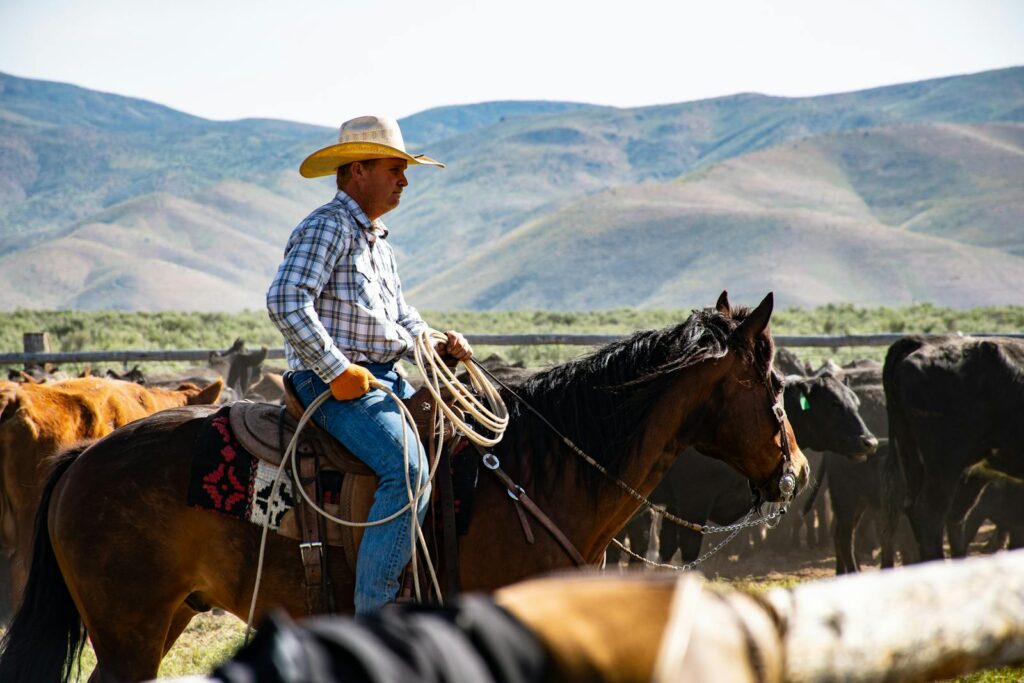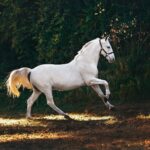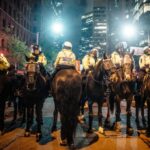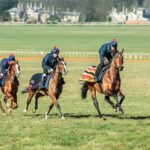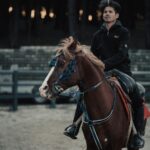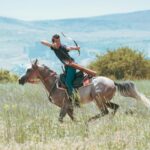When it comes to horse health and behavior, the term “cattle drive” might sound confusing at first. However, this term refers to a herd instinct behavior where horses suddenly bolt or rush forward, sometimes seemingly without provocation. This behavior has roots in their evolutionary history as prey animals and can pose significant dangers to both horses and their handlers. Understanding why horses exhibit cattle drives and learning how to address this behavior is essential for every equestrian, whether you’re a casual rider or a professional trainer. This article delves into the causes, consequences, and solutions for cattle drives in horses, offering insights that could potentially save lives and prevent serious injuries.
Understanding What Cattle Drives Are in Equine Behavior
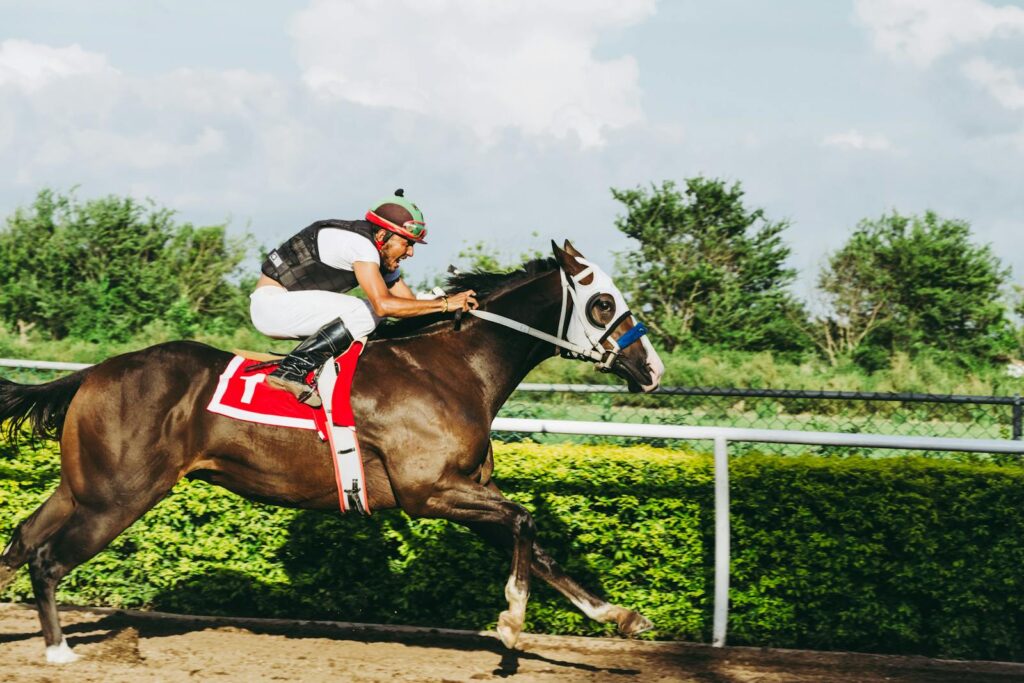
Cattle drives in horses refer to sudden forward rushing movements where a horse bolts unexpectedly, often influenced by herd mentality. This behavior typically occurs when a horse feels threatened or anxious and instinctively seeks safety through flight, with the term “cattle drive” specifically referring to instances where multiple horses move as a unit. The behavior mimics wild herds’ coordinated movements when fleeing predators, where one horse’s decision to run triggers an immediate response in others. Understanding this phenomenon requires acknowledging that horses are prey animals with deeply ingrained survival instincts that have evolved over millions of years. Even domesticated horses retain these instinctive reactions, which can emerge unexpectedly in certain situations regardless of training or temperament.
The Evolutionary Basis of Herd Behaviors
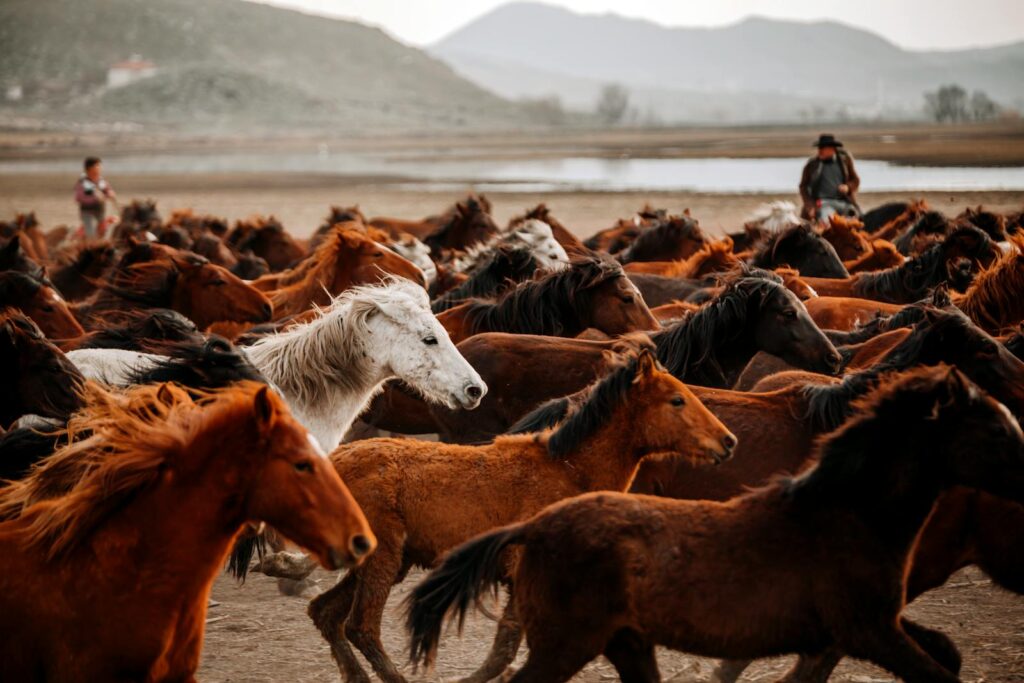
Horses evolved as prey animals on open plains, developing sophisticated social structures and communication systems to enhance their collective survival. Their herd-based defense mechanisms rely heavily on synchronized movements—when one horse detects danger and flees, the entire herd responds instantaneously without needing to verify the threat themselves. This evolutionary adaptation increased survival rates by eliminating hesitation in dangerous situations where seconds could mean the difference between life and death. Modern domestic horses still possess this neurological wiring despite thousands of years of selective breeding and domestication. Their limbic system—the primitive part of the brain responsible for survival instincts—responds to perceived threats before the more evolved neocortex can process whether the danger is real, explaining why even well-trained horses can suddenly participate in a cattle drive behavior.
Physical Risks to Horses During Cattle Drives
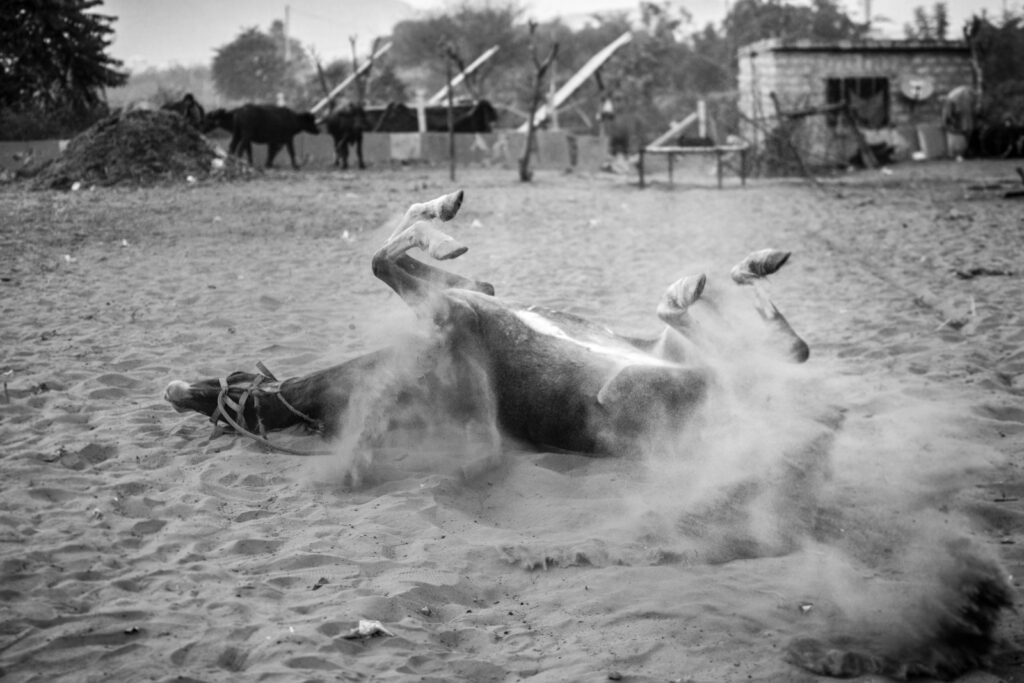
When horses engage in cattle drive behavior, they face numerous physical hazards that can result in serious injuries. Running blindly in panic, horses often collide with fences, structures, or other objects in their environment, resulting in lacerations, contusions, or more severe trauma like fractures. Sudden stops or turns at high speeds can lead to soft tissue injuries including strained tendons, torn ligaments, or muscle damage that may require extensive rehabilitation. Particularly concerning are leg injuries that occur when horses step into holes, slip on unstable ground, or twist limbs while fleeing in a panicked state. Additionally, respiratory distress can develop when horses run extensively while in a state of high anxiety, potentially triggering inflammatory airway conditions or exacerbating existing respiratory issues such as heaves or recurrent airway obstruction.
Dangers to Riders and Handlers
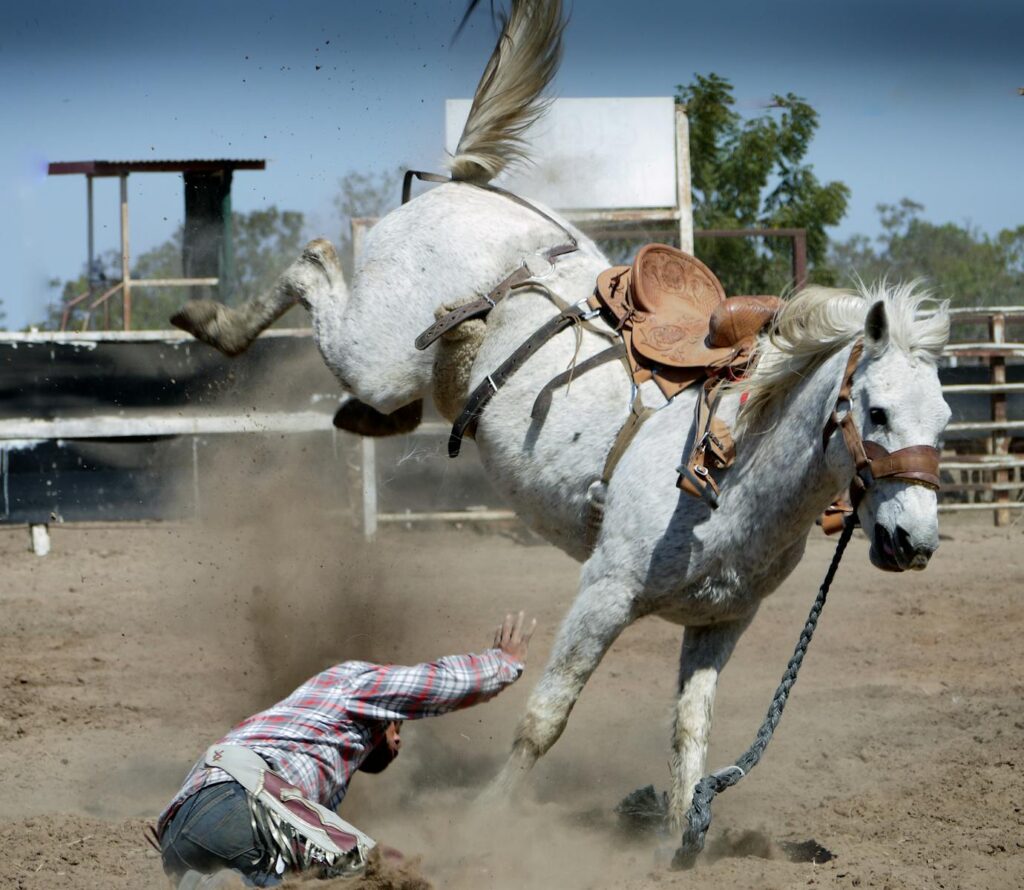
The unpredictable nature of cattle drives makes them extraordinarily dangerous for humans working with or riding horses. When a horse suddenly bolts, riders can be thrown, potentially resulting in concussions, spinal injuries, broken bones, or even fatal trauma, especially if protective headgear isn’t worn. Handlers on the ground face the risk of being trampled, kicked, or crushed between panicking horses and solid objects like stall walls or fences. The psychological trauma from such incidents can be equally devastating, potentially leading to lasting fear and anxiety around horses for those who experience a severe incident. Even experienced equestrians aren’t immune to these risks, as cattle drive behaviors can override years of training and the usually reliable bond between horse and handler within seconds of being triggered.
Common Triggers for Cattle Drive Behavior

Understanding what triggers cattle drive behavior is crucial for prevention, with sudden environmental changes being among the most common catalysts. Loud noises like thunderstorms, fireworks, backfiring vehicles, or construction sounds can instantly trigger a flight response in sensitive horses. Visual stimuli such as flapping objects, sudden movements, or unfamiliar animals can similarly provoke panic, especially in horses with limited exposure to varied environments. Changes in atmospheric pressure before storms can make horses particularly reactive, as their heightened senses detect environmental shifts imperceptible to humans. Social dynamics also play a significant role, as the anxiety or fear response of one respected herd member can rapidly cascade through an entire group, with young or inexperienced horses being particularly susceptible to following the reactions of more dominant herd members.
The Role of Domestication in Modifying Herd Behavior
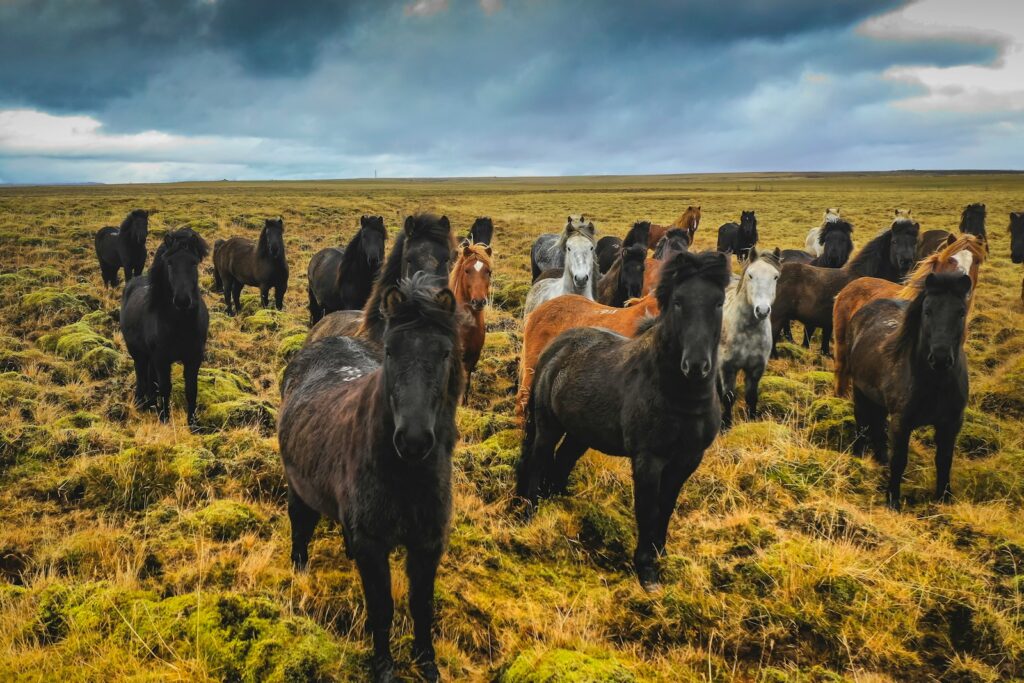
Domestication has significantly influenced horse behavior over thousands of years, though it hasn’t eliminated fundamental instincts like those driving cattle rush behaviors. Selective breeding has generally favored horses with calmer temperaments and greater capacity to override instinctual responses, producing animals more suitable for human partnership. Modern domestic horses typically display more moderate threat responses than their wild counterparts, often showing heightened assessment capabilities before resorting to full flight. However, domestication remains an incomplete process from a behavioral standpoint, with even the most well-bred and well-trained horses still capable of reverting to instinctive responses under sufficient stress. This biological reality highlights why managing environments and training appropriately is more effective than expecting domestication alone to prevent cattle drive behaviors.
Preventative Training Techniques
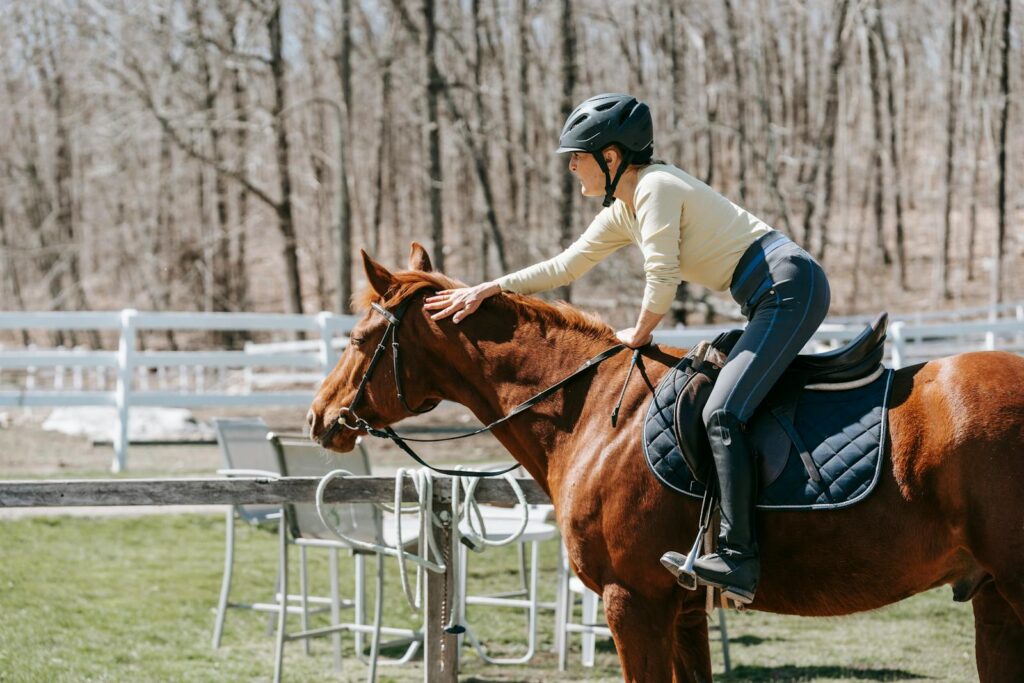
Implementing systematic desensitization programs can significantly reduce the likelihood of cattle drive behaviors by gradually exposing horses to potential triggers in controlled, positive circumstances. Groundwork exercises focusing on responsiveness and emotional control help establish clear communication channels between horse and handler that remain functional even during stressful situations. Advanced trainers often incorporate specific simulations that mimic low-level stressors, allowing horses to practice remaining calm while developing neural pathways that support more measured responses to stimuli. Consistency is paramount in this training approach, with regular sessions being more effective than intense but infrequent work, as the horse’s nervous system needs repetition to establish new default responses. Additionally, including varied environments in training protocols helps horses generalize their learning rather than remaining calm only in familiar settings.
Management Strategies for Multi-Horse Environments
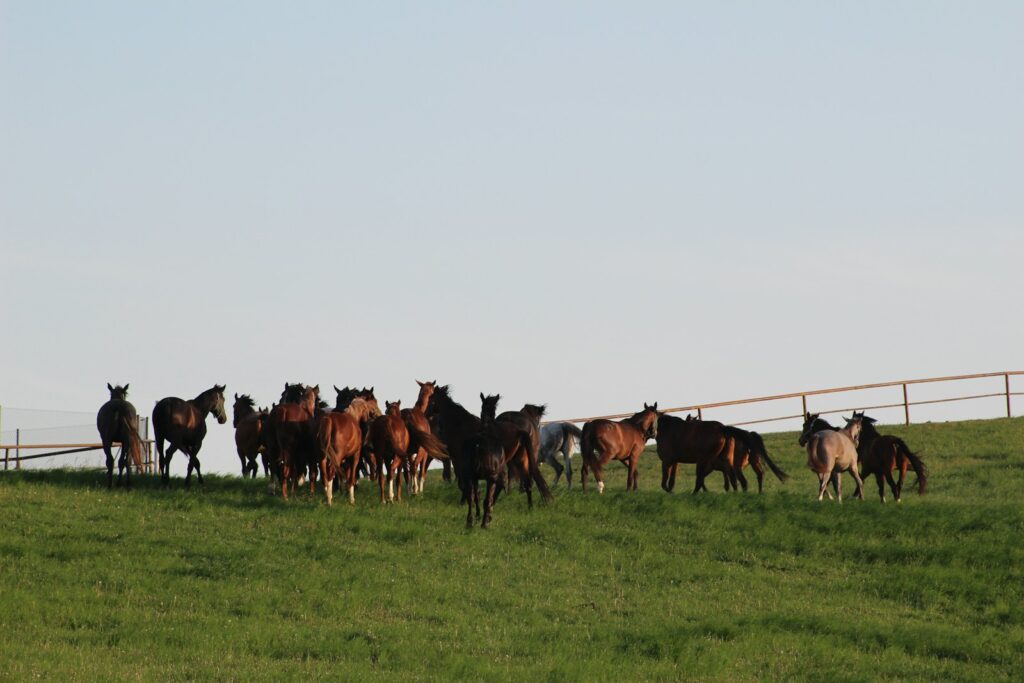
Thoughtful facility design plays a crucial role in preventing and managing cattle drive behaviors in group settings, with consideration given to paddock layouts that avoid blind corners or narrow passages where horses might feel trapped. Introducing new horses to established herds requires careful protocols, including supervised gradual introductions through adjacent but separate spaces before physical interaction occurs. Strategic grouping based on temperament and social compatibility can create more stable herd dynamics, as placing highly reactive horses together often amplifies anxiety-driven behaviors. Daily observation of subtle changes in group dynamics allows handlers to identify and address rising tensions before they escalate into full panic situations. Established routines provide predictability that generally lowers baseline anxiety levels across the herd, making spontaneous flight responses less likely to occur or spread.
Nutritional Factors Affecting Reactivity
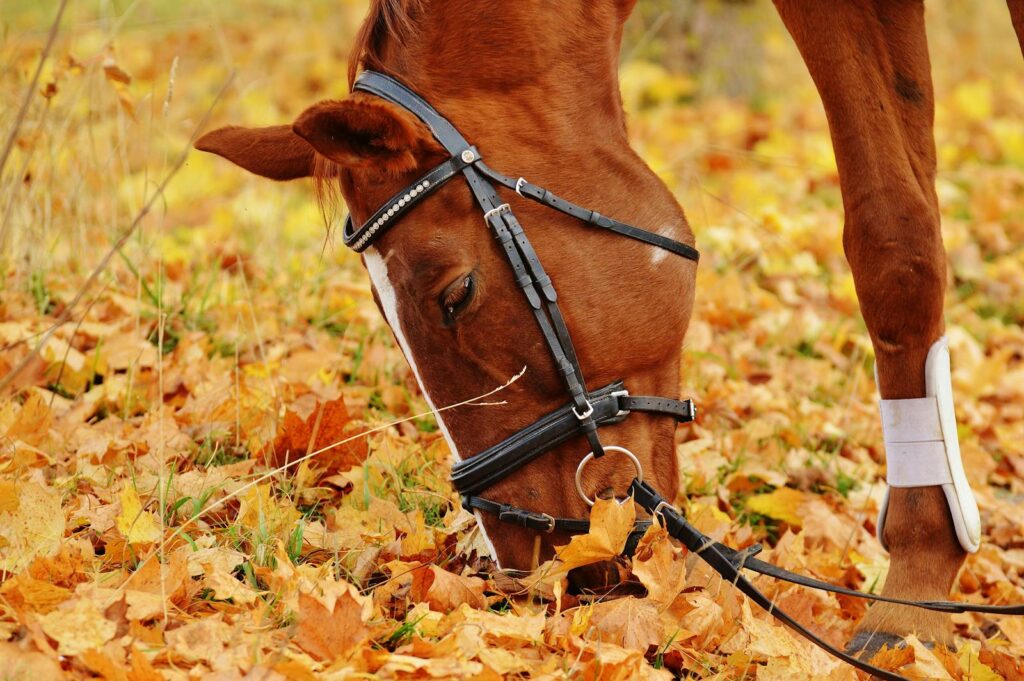
Diet plays a surprisingly significant role in horse reactivity and susceptibility to cattle drive behaviors, with high-energy feeds potentially increasing nervous system excitability. Diets rich in sugars and starches can create physical restlessness and mental hyperactivity similar to how sugary foods affect children, making horses more reactive to environmental stimuli. Magnesium deficiency has been specifically linked to increased nervousness and startle responses in horses, with supplementation sometimes producing marked improvements in high-strung individuals. Balanced omega fatty acid intake supports optimal nervous system function, potentially moderating how horses process and respond to stressful stimuli. Consistency in feeding schedules also matters significantly, as irregular meals can cause stress and anticipatory behaviors that may lower the threshold for panic responses in sensitive horses.
Recognizing Early Warning Signs

Developing the ability to recognize pre-flight behaviors can provide crucial seconds to intervene before a full cattle drive ensues. Elevated head posture with intense focus and flared nostrils typically indicates a horse’s heightened alertness and preparation for potential flight. Increased muscular tension, particularly in the neck and hindquarters, signals the horse’s physiological readiness to burst into motion at any moment. Synchronized attention among multiple horses—when several animals simultaneously orient toward the same stimulus—often precedes group movement and deserves immediate handler attention. Subtle changes in breathing patterns, such as short, shallow breaths or momentary breath-holding, frequently occur just before flight responses are triggered, giving attentive handlers a final opportunity to redirect attention or implement calming techniques.
The Impact of Human Behavior on Cattle Drives
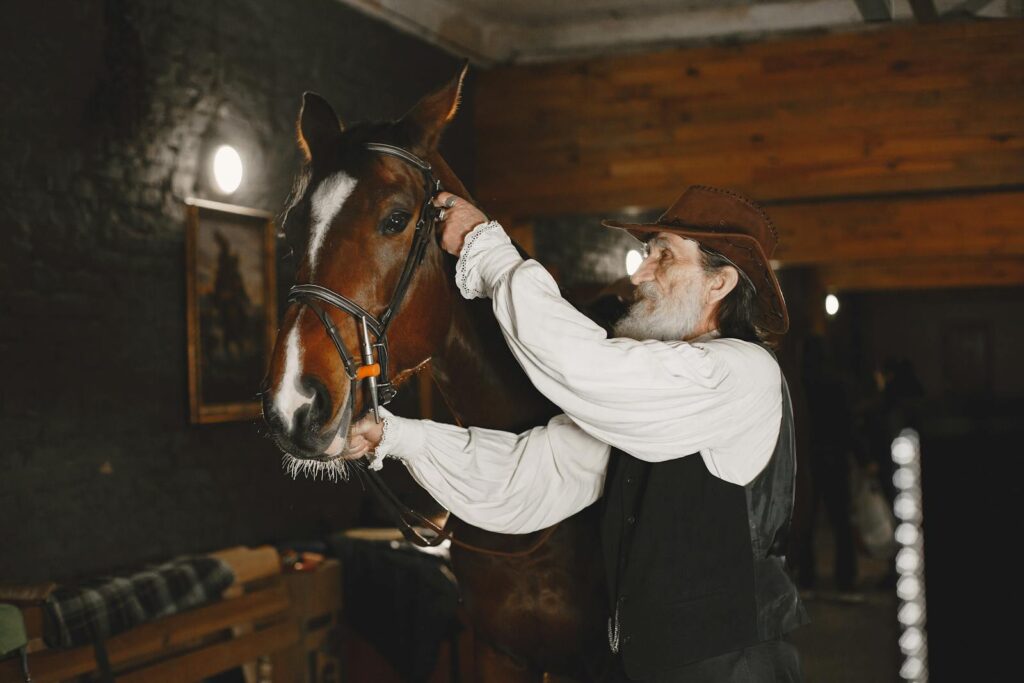
Human emotional states significantly influence horse behavior, with nervous handlers often inadvertently triggering or amplifying reactive responses in their equine partners. Horses are remarkably perceptive to subtle physiological changes in humans, detecting elevated heart rates, muscle tension, and stress hormones that signal potential danger. Inconsistent handling creates unpredictability that many horses find inherently stressful, potentially lowering their threshold for flight responses when faced with additional environmental stimuli. Confident, clear leadership has a noticeably calming effect on most horses, providing them with a sense of security that reduces their need to make independent survival decisions. Professional trainers often emphasize that managing one’s own emotional regulation is a prerequisite skill for effectively managing horse reactivity, as the interconnection between human and equine nervous systems can either escalate or defuse potential cattle drive situations.
Medical Considerations and Veterinary Evaluation

Some cases of extreme reactivity or sudden changes in behavior warrant veterinary investigation, as pain or medical issues can dramatically lower a horse’s threshold for flight responses. Vision problems, particularly deteriorating eyesight, can make horses significantly more reactive to movements and environmental changes they cannot clearly process. Neurological conditions might manifest initially as behavioral changes, with heightened reactivity sometimes being an early indicator of conditions affecting the central nervous system. Hormonal imbalances, particularly in mares during estrus or in horses with endocrine disorders, can create periods of increased sensitivity to environmental stimuli. A thorough veterinary evaluation might include bloodwork, neurological assessments, vision testing, and pain localization to rule out or address underlying medical factors before assuming the behavior is purely psychological.
When Professional Intervention Becomes Necessary
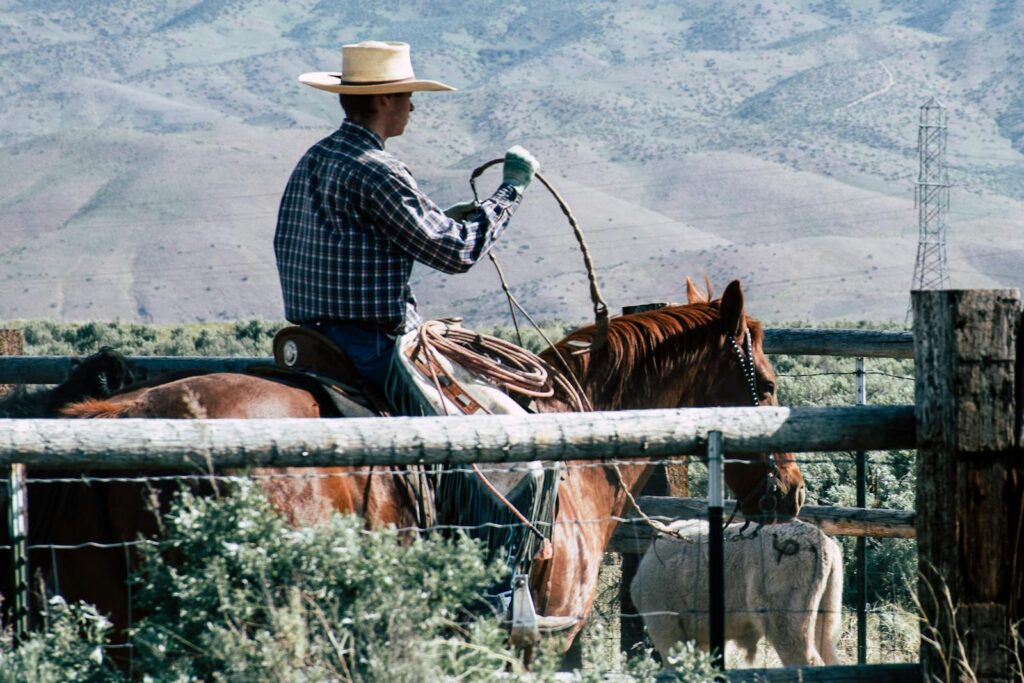
Recognizing when to seek professional help is crucial for addressing persistent cattle drive behaviors that don’t respond to basic management and training approaches. Professional trainers specializing in reactive horses possess specific skill sets for systematic behavior modification and can often achieve progress more safely than owners working alone with dangerous behaviors. Veterinary behaviorists bring unique medical perspectives to complex cases, potentially identifying biological factors contributing to extreme reactivity that traditional trainers might miss. The financial investment in professional intervention often proves economically sound when considering the potential costs of injuries, property damage, or liability issues resulting from unmanaged cattle drive incidents. While seeking help might feel like admitting defeat, experienced horse owners recognize that knowing when to consult specialists demonstrates responsible horsemanship rather than inadequacy.
Building Long-Term Confidence in Reactive Horses
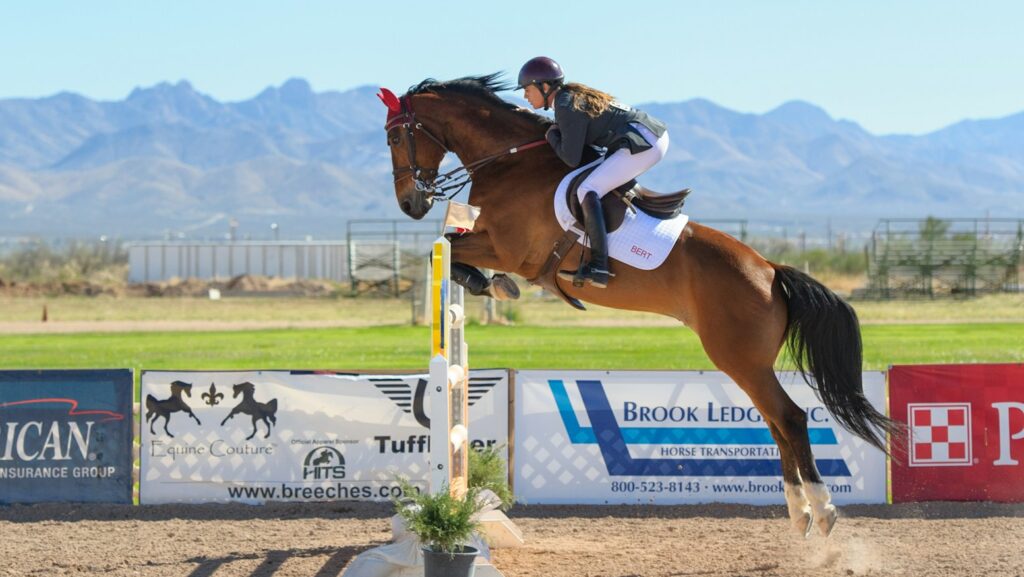
Rehabilitating horses prone to cattle drive behaviors requires a comprehensive approach focused on building genuine confidence rather than simply suppressing reactions. Providing consistently positive experiences in previously triggering situations helps horses develop new neural associations that counteract fear responses over time. Incremental challenges matched precisely to the horse’s current confidence level create opportunities for success without overwhelming their coping mechanisms. The concept of “advance and retreat” proves particularly effective, allowing horses to approach stressors voluntarily and retreat when needed, gradually increasing their comfort zone at their own pace. Perhaps most importantly, patience becomes the defining factor in successfully rehabilitating reactive horses, as rebuilding trust and confidence typically requires months of consistent work rather than quick fixes, with progress often following a nonlinear path of improvements and occasional setbacks.
Conclusion: Respecting Instinct While Promoting Safety
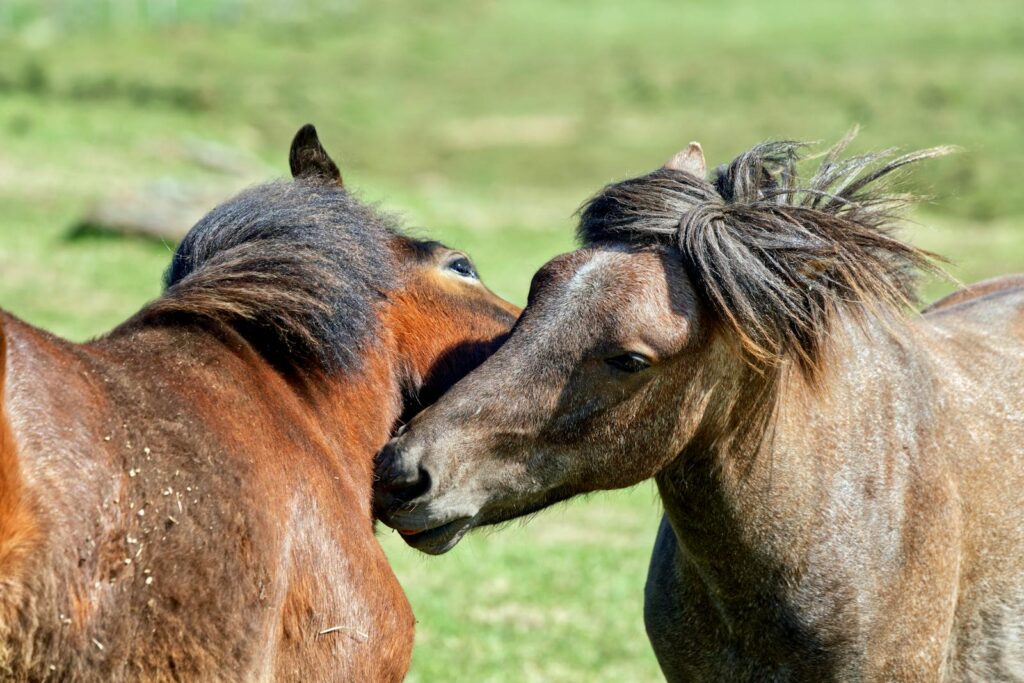
Addressing cattle drive behaviors requires balancing respect for horses’ natural instincts with the practical requirements of domestic partnership. By understanding the evolutionary basis for these behaviors, implementing appropriate training and management practices, and remaining attentive to early warning signs, equestrians can significantly reduce the risks associated with sudden flight responses. Whether working with individual horses or managing larger herds, prioritizing education and prevention over reaction creates safer environments for both horses and humans. Remember that even the most reliable horses retain their prey animal instincts and may exhibit cattle drive behaviors under sufficient stress. This reality isn’t a failure of training or relationship but rather a reminder that respectful partnership with horses always includes honoring and working with their nature rather than against it.

